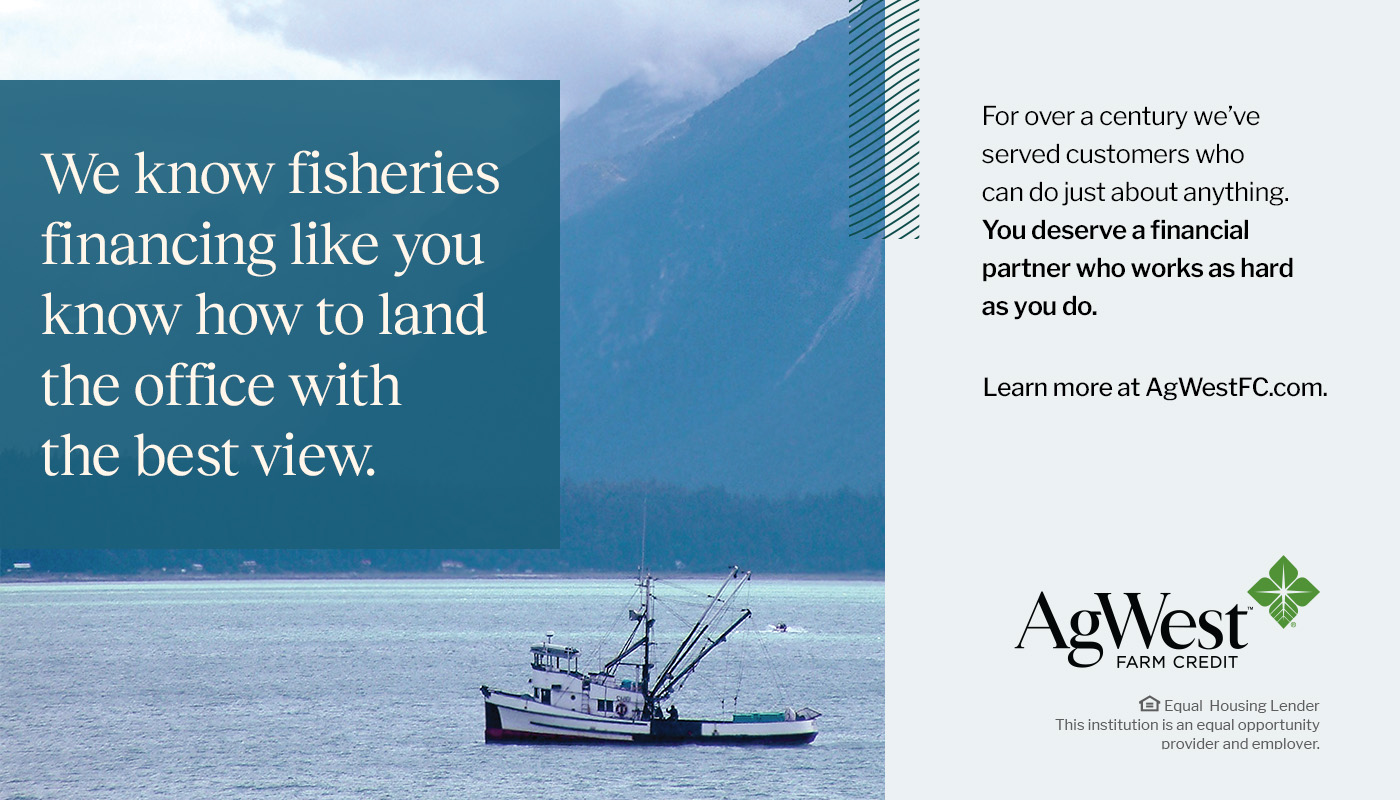Seawatch by Cristy Fry
January 21, 2021
Trawl fishermen targeting pollock in the Gulf of Alaska have collectively agreed to stand down from the January 20 start of the fishery in order to target the fish in their more lucrative phase of harvesting the roe, instead of the flesh of the fish which is used more in fish sticks and surimi.
The fishermen want to wait for two weeks to allow the roe to ripen, making the fish more valuable.
Julie Bonney, executive director of the Alaska Groundfish Data Bank, told the Kodiak Daily Mirror that the self-imposed delay will push the fishery back to when the pollock are aggregating in preparation for spawning higher in the Shelikof Strait.
"As the fish move in to spawn, the catch rates are better, the fish grade is better, roe quality is better," she said.
Fish quality tends to be better as they aggregate to spawn before they expend a large amount of energy.
She said pollock tend to be "spawned out” by mid-March. Roe quality and production increase if the fish are harvested before then.
Additionally, the more pollock congregate to spawn, the less salmon bycatch fishermen typically harvest.
If pollock fishermen harvest too much Chinook salmon bycatch and hit the cap on how many can be caught, the fishery will be shut down.
This year's total allowable catch of pollock in the central Gulf of Alaska is 2.3% lower than last year. The number is based on stock assessments.
This season's central Gulf of Alaska total allowable catch is 48,000 metric tons.
The change was decided as the pollock seasonal allocations were consolidated for the first time. In June 2019, the North Pacific Management Council voted to combine the four pollock seasons— two in spring and two in fall — to just two seasons: one that runs from Jan. 20 to May 31, and another that runs from Sept. 1 to Nov. 1.
"The purpose of this action is to reduce operational and management inefficiencies in the Western and Central GOA trawl catcher vessel pollock (fishery)," said the council in a newsletter. Combining the seasons means that the annual harvest quotas are larger each season, making it easier for federal management to track the harvests.
Lastly, fewer seasons also mean a more efficient fishery with fewer "starts and stops," Bonney said.
The change was highly controversial, with critics concerned that participation would increase as the fishery became more efficient. They were also worried that bycatch levels would be higher in the spring than in the fall.
As with other fishery participants, many pollock fishermen are worried about how the fishery will unfold during the ongoing COVID-19 pandemic, and whether there will be an outbreak in the processing plants.
If an employee at the seafood processing plants contracts the virus, any close contact is required to quarantine for two weeks, which would mean a decreased work force, Bonney said.
"Everybody is very concerned about how the whole thing will play out," she said.
Before, and even after the Magnuson-Stevens Act was implemented by Congress in 1976, there were joint ventures between foreign processors and U.S. catcher vessels, where the U.S. trawlers would catch the pollock and pass the “cod end,” the part of the trawl where the fish were massed, to a foreign processor.
That system allowed for the foreign processors to operate within 200 miles of shore, and Shelikof Strait was a busy place for large Korean, Taiwanese and Japanese processing vessels for those joint ventures, especially during the peak roe periods for pollock.
Joint ventures were allowed within 200 miles until 1978, two years after MSA was enacted, aided by a loophole in the Fishery Conservation and Management Act, part of MSA, according to an article written by Donna Christie, a researcher in fisheries management at Florida State University in 1980.
Onshore processors demanded that the FCMA be amended to clarify that the fishery conservation zone was established to promote the development of not only the fishermen but the entire fishing industry and to limit joint ventures which hindered the development of new onshore processing capacity.
Opponents also argued that onshore processors could not compete with foreign processing vessels that are not subject to U.S. wage, safety and health requirements. New investment necessary for development of processing capacity for underutilized species would suffer because of the competition.
Advocates of the arrangements point out that joint ventures had been proposed only for species for which there is “little or no United States processing capacity." The joint ventures would not only transfer the technology necessary to open up new fisheries for United States fishermen, but also provide an immediate market.
Proponents also argued that the creation of joint ventures would encourage the development of United States fisheries for underutilized species.
An amendment to the FCMA shutting down joint ventures hastily passed in the summer of 1978.
This article also appears in the Homer News. Cristy Fry can be reached at [email protected].






